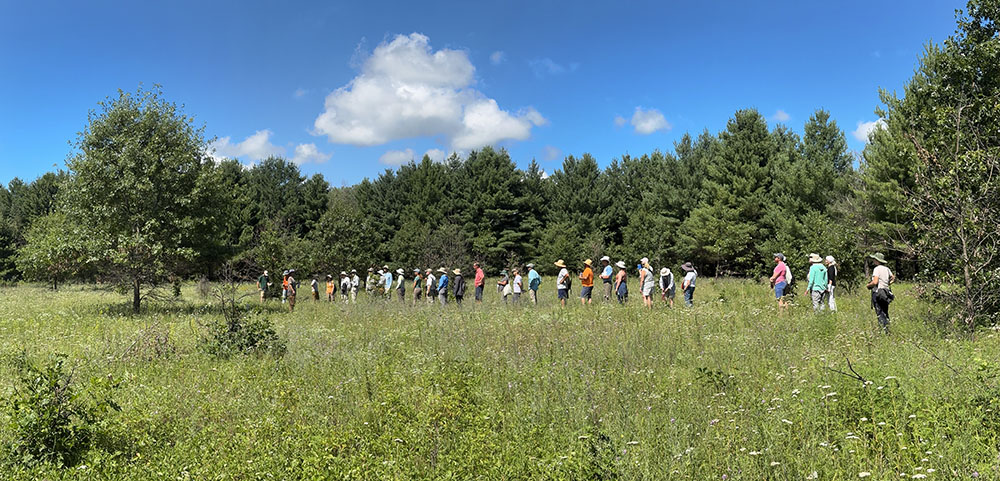
Touring the Mukwonago River Oak Barrens with The Prairie Enthusiasts
August 2, 2025 | Topics: Places
By Eddee Daniel, with input from The Prairie Enthusiasts
The thermometer was approaching 90° and the unrelenting sun bore down on us as we walked the prairie. But over 30 people cheerfully put up with it on a tour of the 61 acres of rare sand barren habitat along the pristine Mukwonago River. The property was recently acquired by The Prairie Enthusiasts, a land trust and prairie advocate organization. There were experts on hand from other conservation groups as well, including the Waukesha County Land Conservancy and the Urban Ecology Center, to educate the participants about the restoration efforts and identify the plant life that we were seeing all around us.
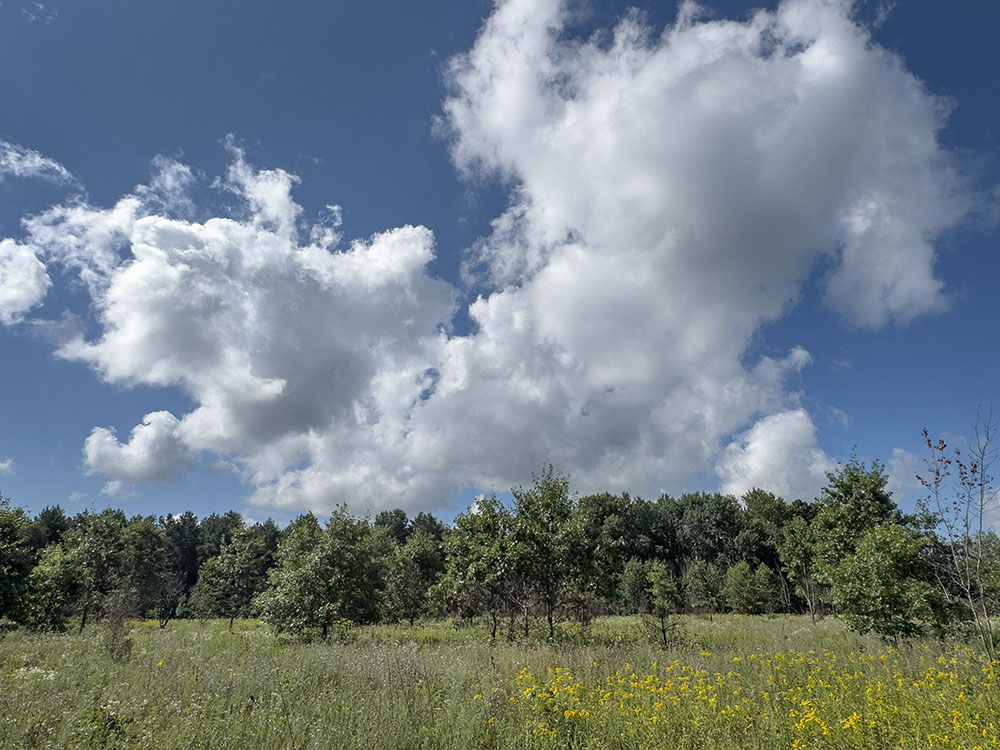
The restoration had begun prior to acquisition in June of this year by the land trust. The previous owner, Pamela Meyer, was also on hand to share with us her love of the land and desire to see it returned to its native glory. She has been caring for the property for decades, working with her neighbors to support the health of the Mukwonago River watershed and improve the quality of the habitat on the site. Knowing that the land was special, she has been bringing botanists, biologists, and ecologists to the property over the years so that she can understand the habitat better.
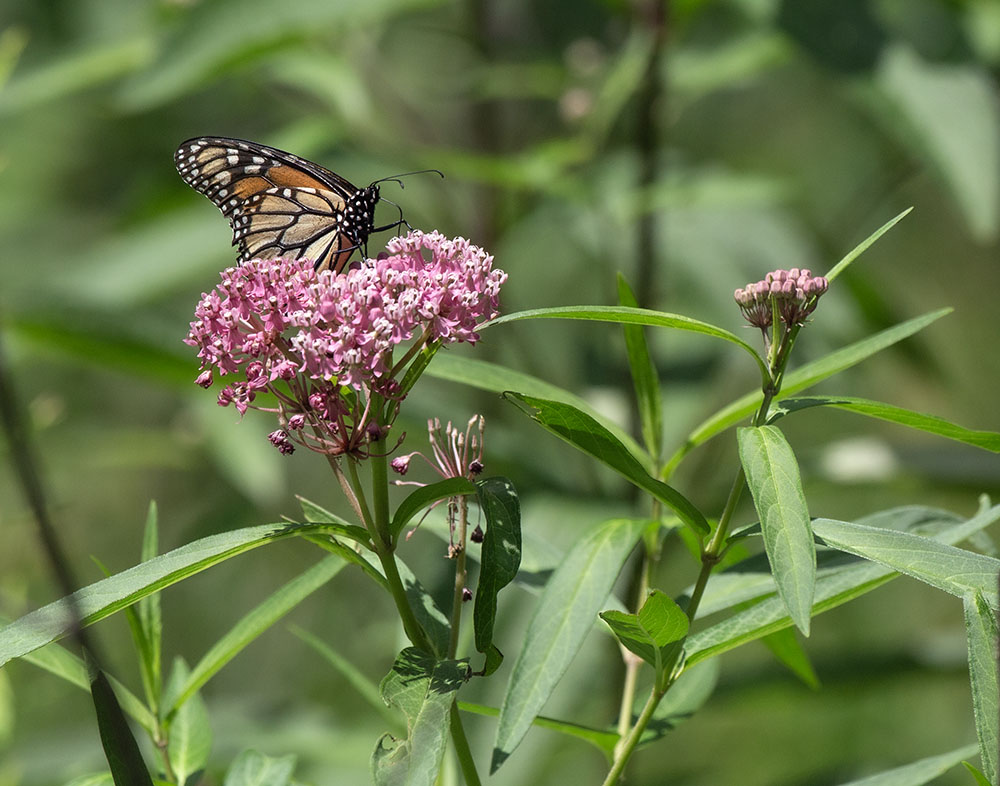
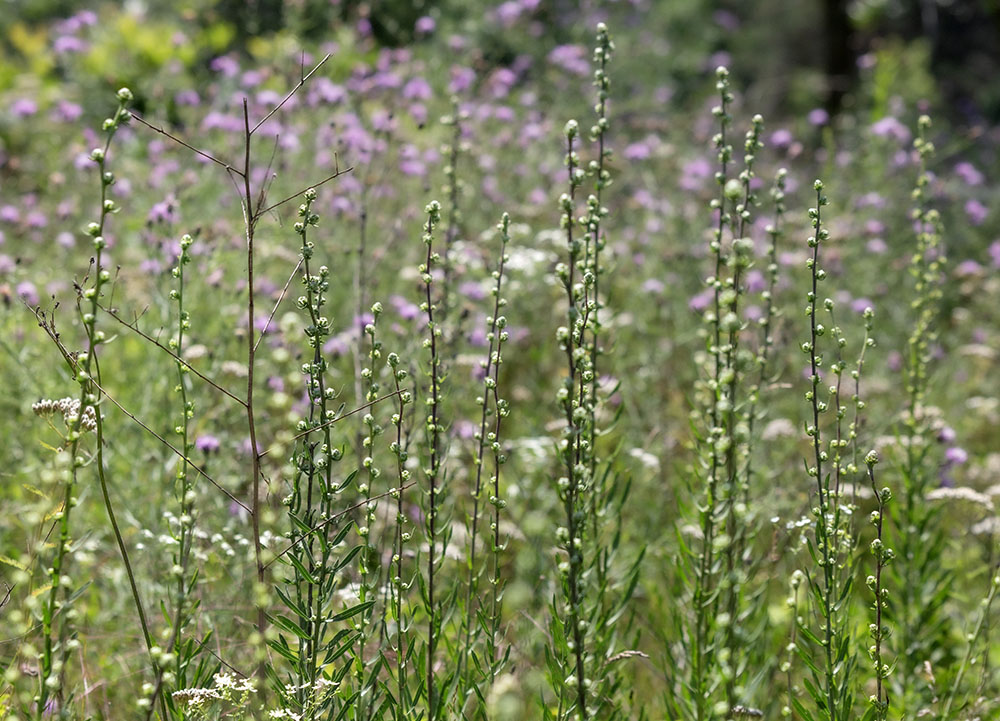
One of those experts was Dan Carter, an Ecologist with The Prairie Enthusiasts, who led the team conducting the tour. At one point Carter stood in the middle of the wide-open prairie and described how thickly it had been overgrown with buckthorn and other aggressive species. A few evergreens still stood here and there, remnants from its tenure as a Christmas tree farm.
“This piece of habitat has survived where so much has been lost to invasive brush and
development—there’s almost nothing else like this in Southeastern Wisconsin.” ~ Dan Carter.
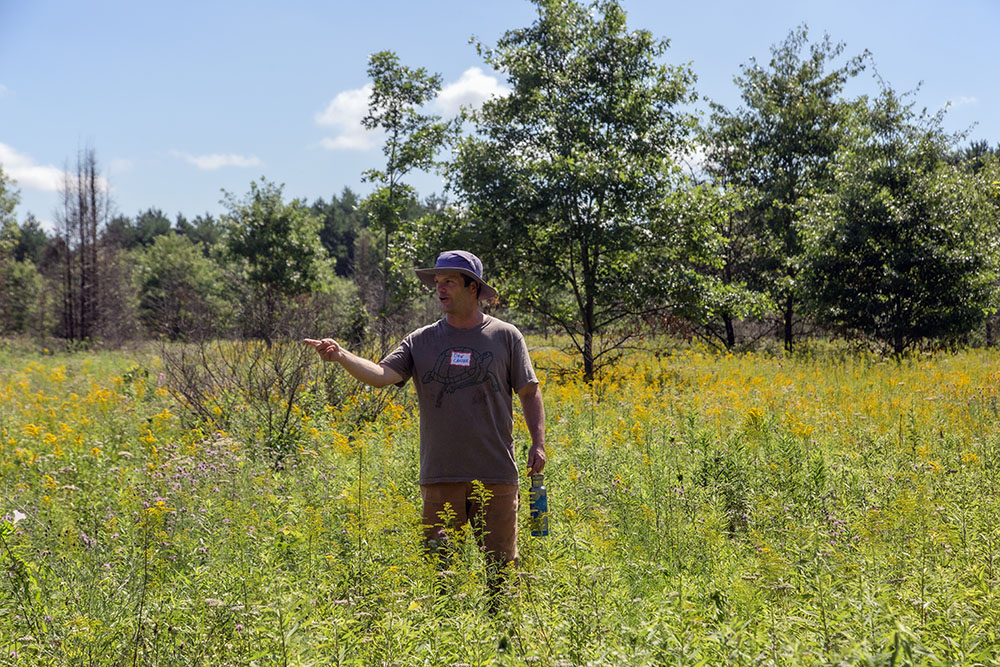
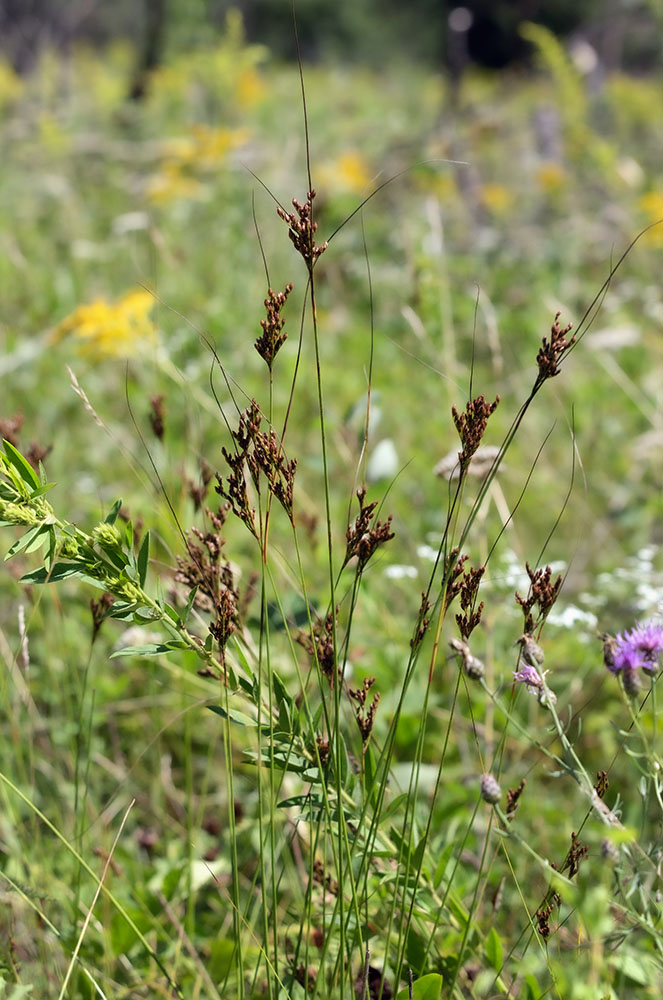
The land is flat and sandy, a legacy of alluvial deposits from the last glacier when this area was underwater for a time. It is ideal for certain species and habitats such as oak savanna, once common in Wisconsin (and in a band stretching from Canada to Texas), that are now exceedingly rare in the region and among the most endangered on the planet.
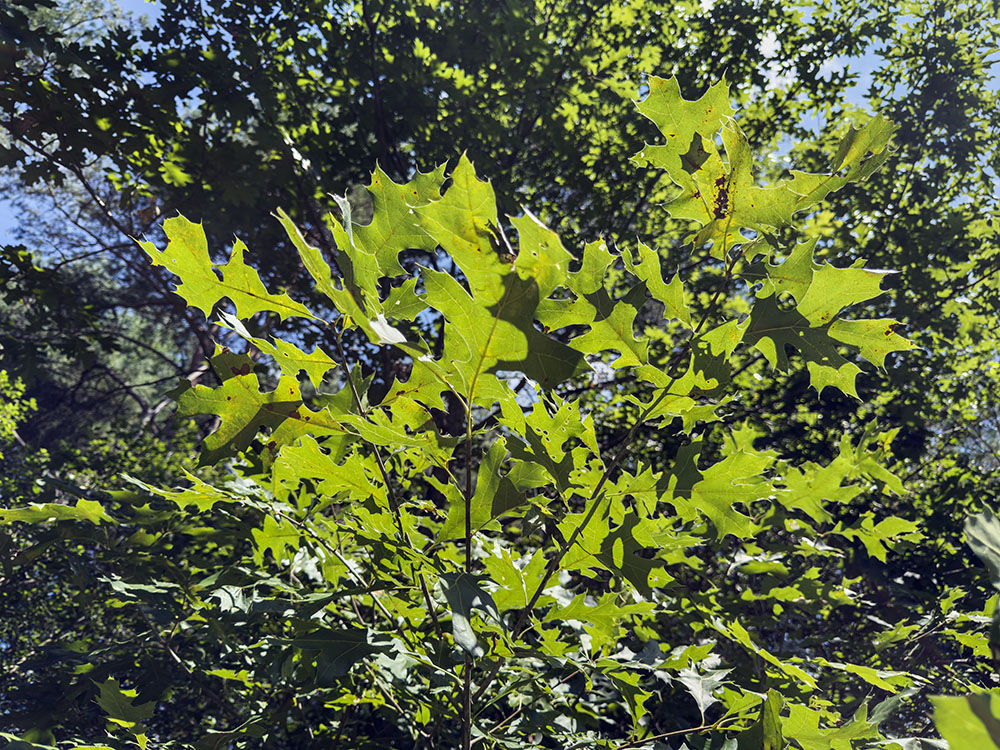
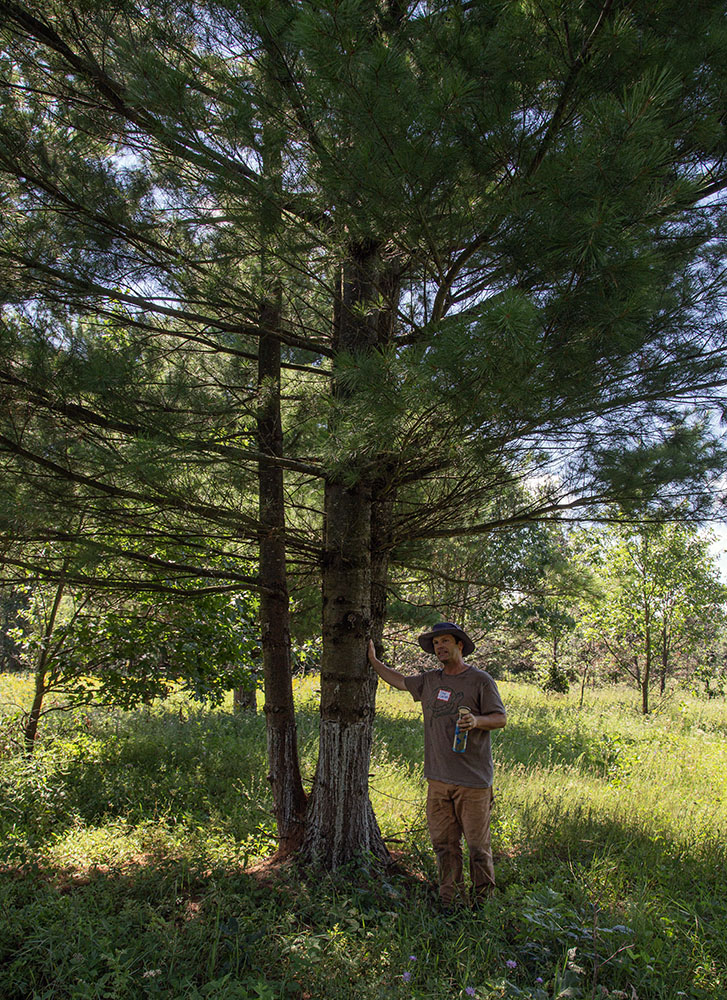
The former tree farm, then largely a monoculture, is now teeming with life. The site supports over 300 native plant species within a mosaic of sedge meadow, moist savanna, and prairie—and several new species were identified and added to the list during our tour! The remaining wooded areas are slowly being thinned and cleared of undesirable species. The Mukwonago River, one of the most pristine in the state, winds through the property in a lazy flow that belies the activity beneath the surface. Over 50 species of fish can be found in the river, rivaling the diversity of much larger systems like the Wisconsin and Mississippi Rivers.
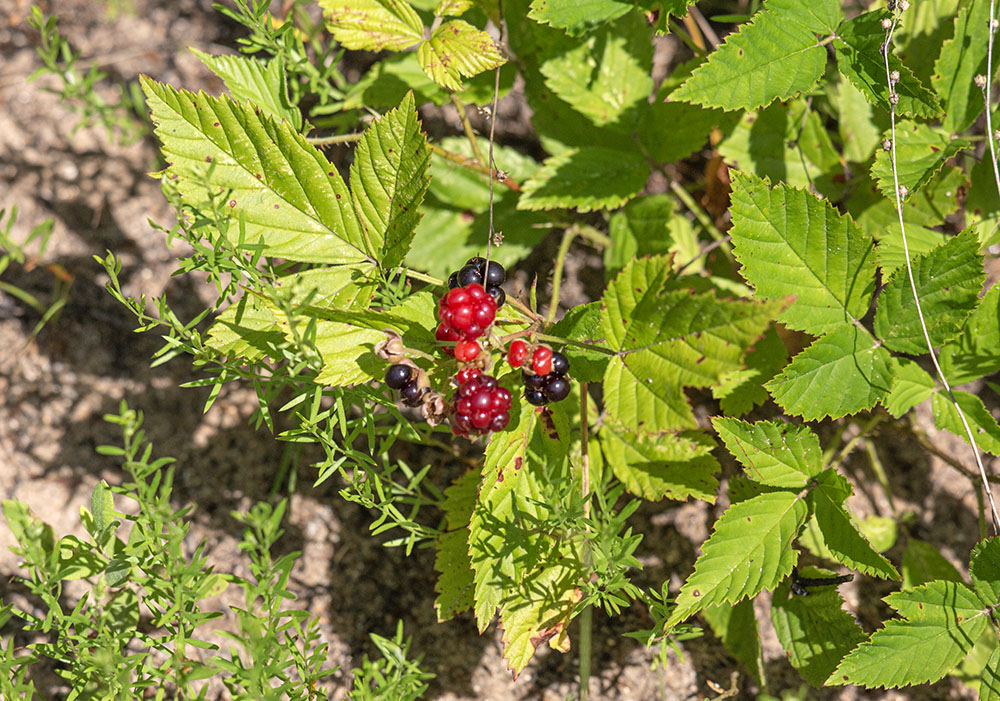

The Mukwonago River Oak Barrens is the second property protected by the Glacial Prairie Chapter of The Prairie Enthusiasts and the largest site they have protected to date. The chapter includes eight counties of Southeastern Wisconsin. The Prairie Enthusiasts has chapters in Minnesota and Illinois as well as Wisconsin. Their mission is “to ensure the perpetuation and recovery of prairie, oak savanna, and other associated ecosystems of the Upper Midwest through protection, management, restoration, and education.”
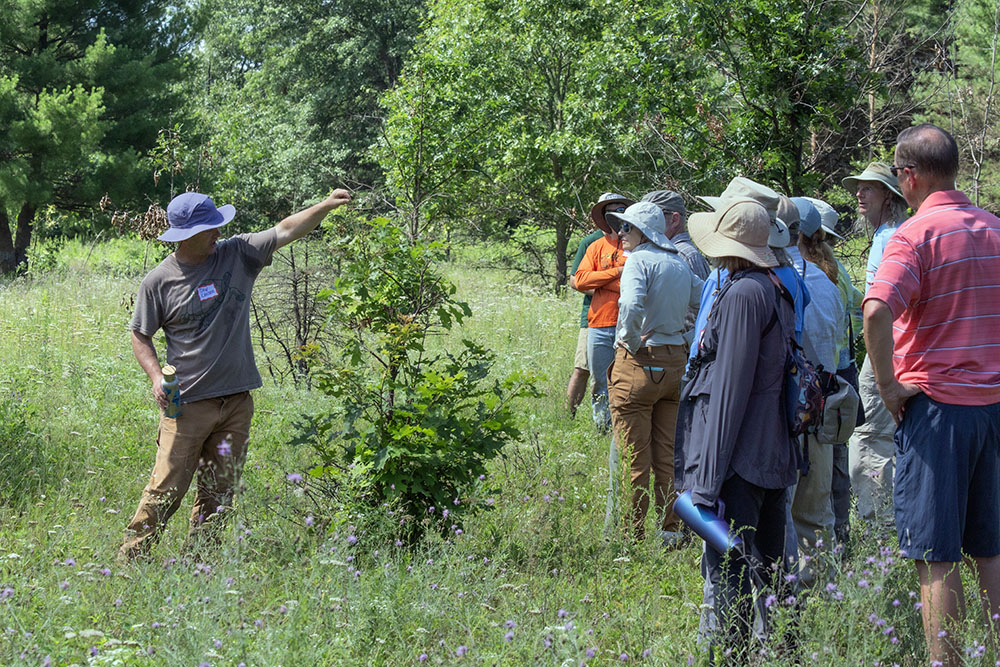
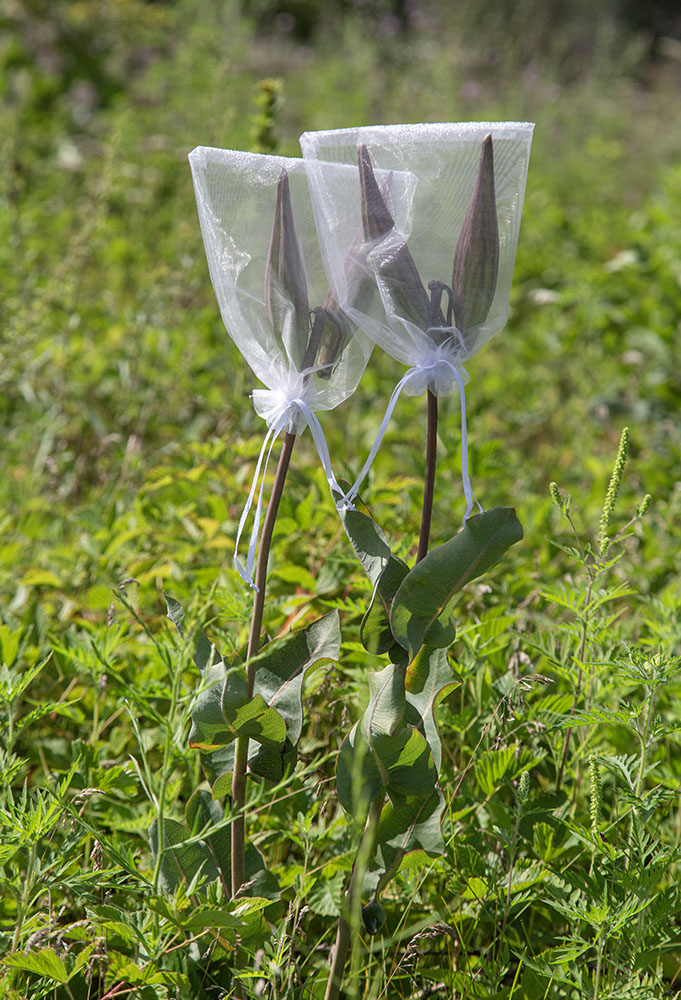
Carter demonstrated how herbicide is safely applied to the trunks of buckthorn in order to control the spread of this invasive species and minimize harmful side effects. But the primary management tool is fire. Native prairie and oak savanna species have been adapted to fire over centuries of management by indigenous tribes prior to the appearance of European settlers.
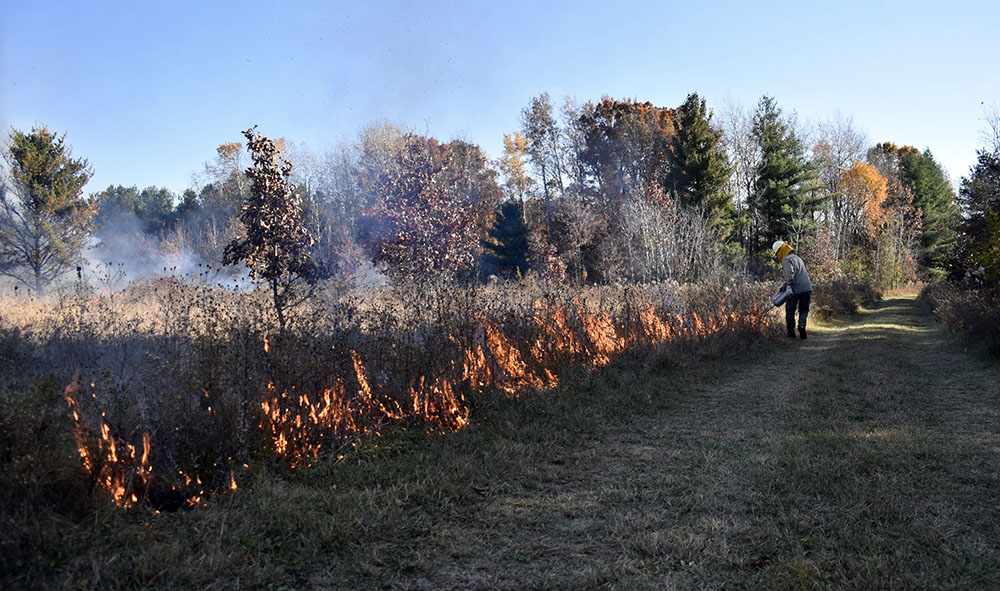
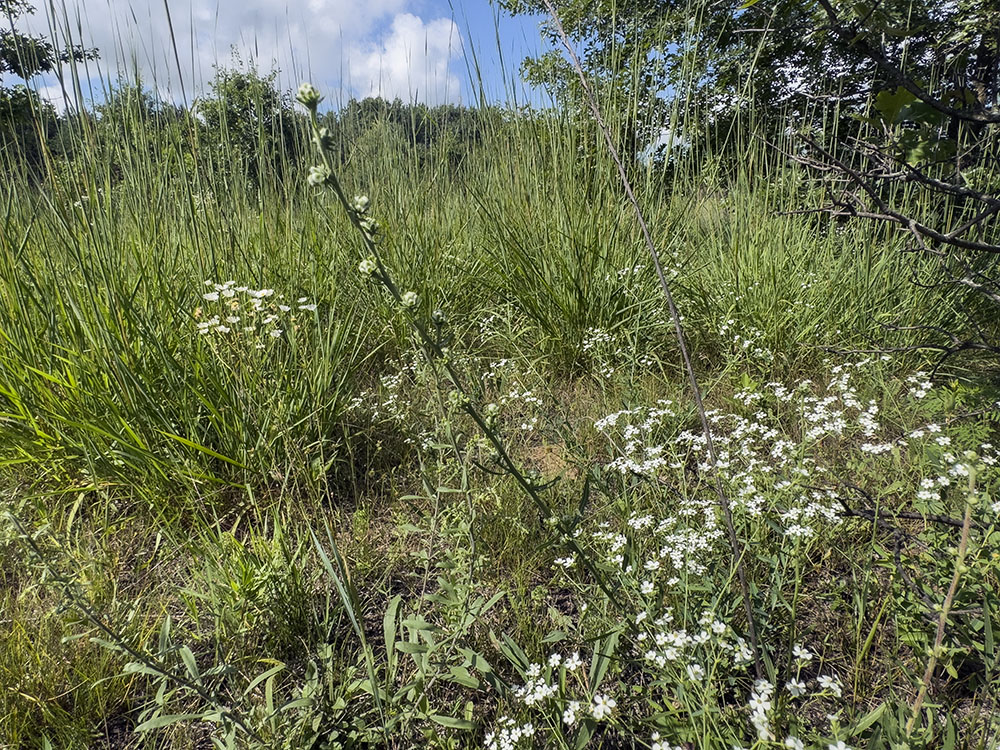
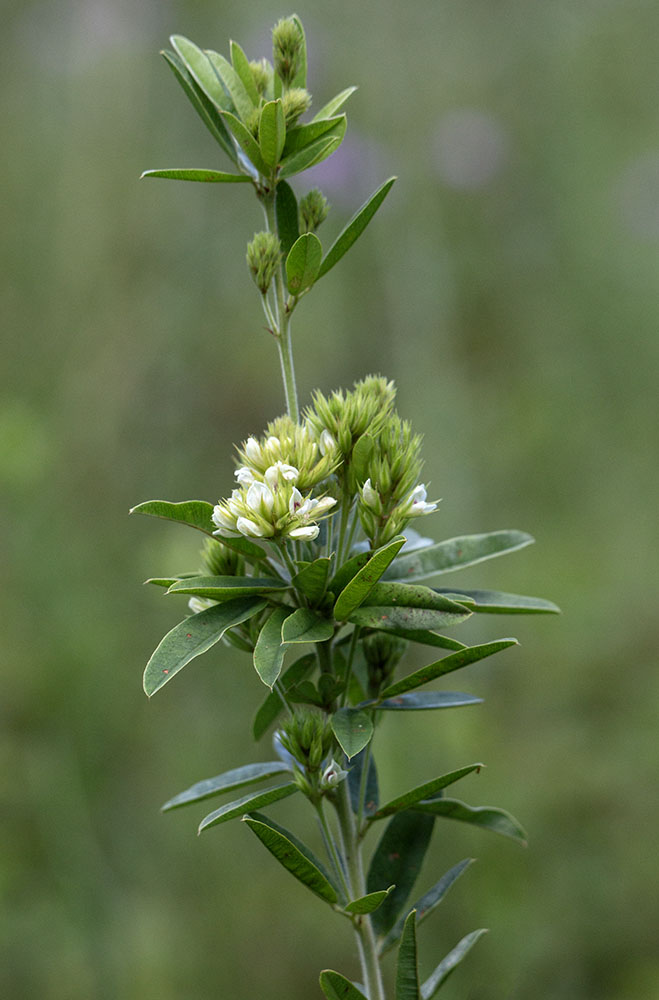
For a year prior to The Prairie Enthusiasts acquiring the site, volunteers with the Glacial Prairie Chapter have shown up weekly to steadily expand the footprint of the most valuable habitats. The goal is to link the remnant old-growth ecosystems together into a single unit. The work is strenuous—massive Scotch pines leftover from its years as a tree farm must be removed to provide light for native species in the oak barrens. Then every acre cleared requires a diligent regimen of regular prescribed burns and the sowing of native seeds.
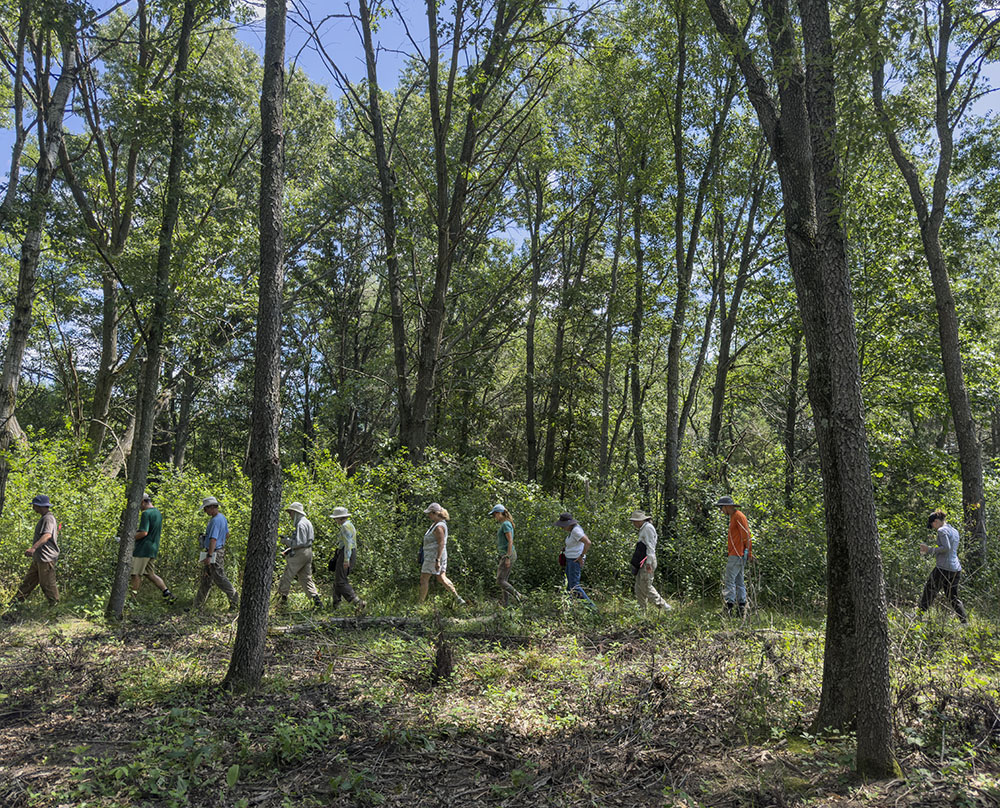
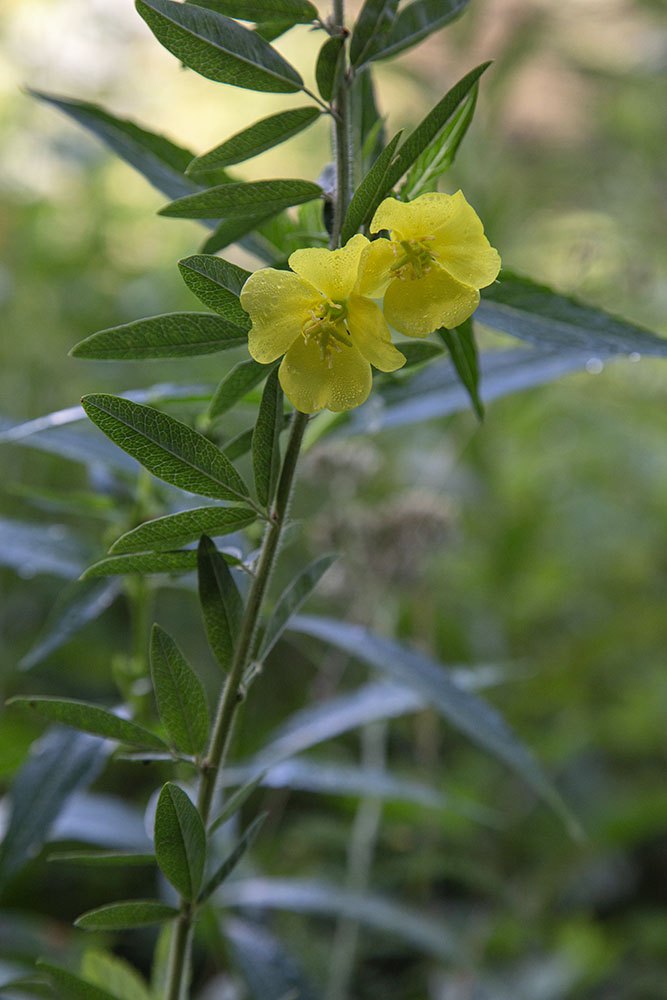
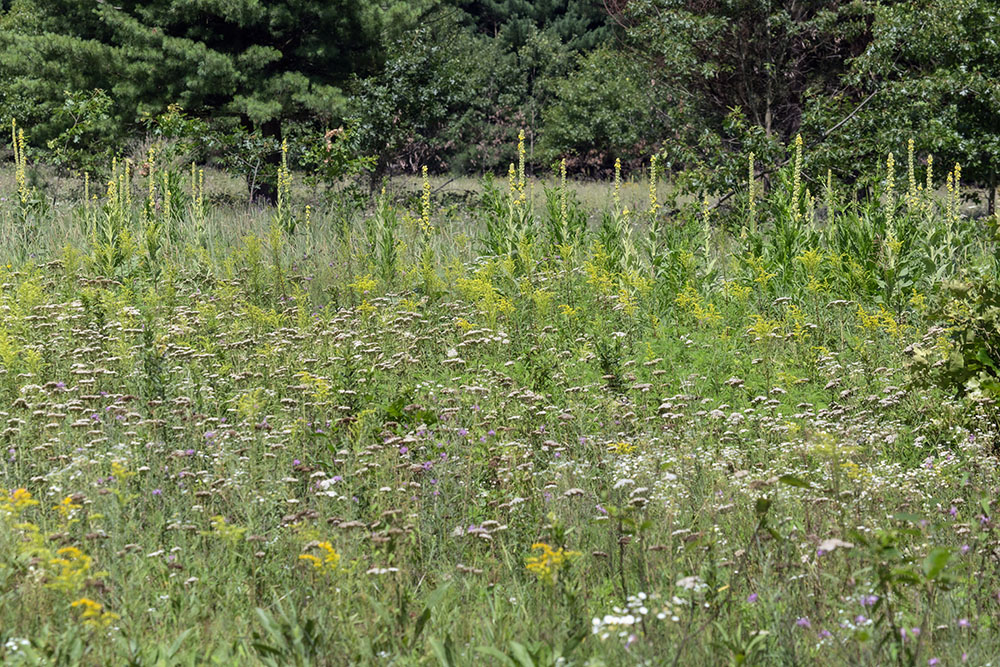
Helen Holtz, Land Management Director for Waukesha County Land Conservancy, who was also on the tour, shared this reflection in a follow-up email:
“The Mukwonago River Oak Barrens is a place I’ve known and cared about for decades. I still remember my very first ‘job’ as a middle schooler, helping with parking and handing out hand saws back when it was just an old Christmas tree farm. Over the years, I’ve watched it slowly come back to life and I’ve been fortunate to play a small role in that journey. From removing invasive species to participating in prescribed burns and planting native prairie seeds, each step has been a labor of love. Seeing more than 60 acres now permanently protected along one of Wisconsin’s most ecologically important rivers fills me with hope. I’m so thankful to The Prairie Enthusiasts for making that hope a reality and for ensuring this special place will continue to thrive.”
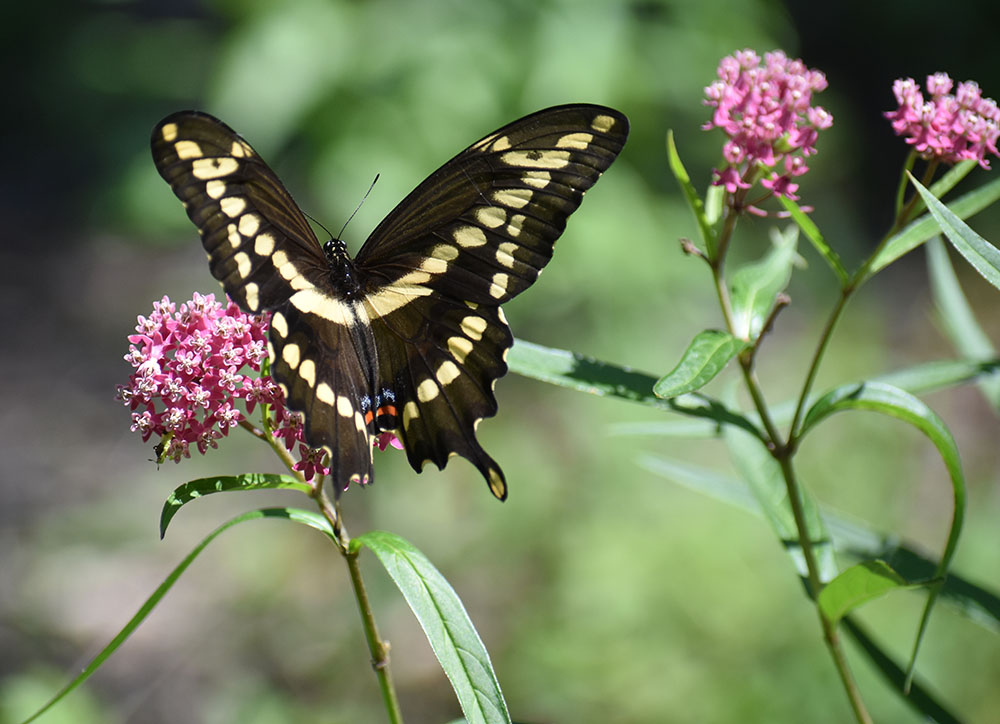
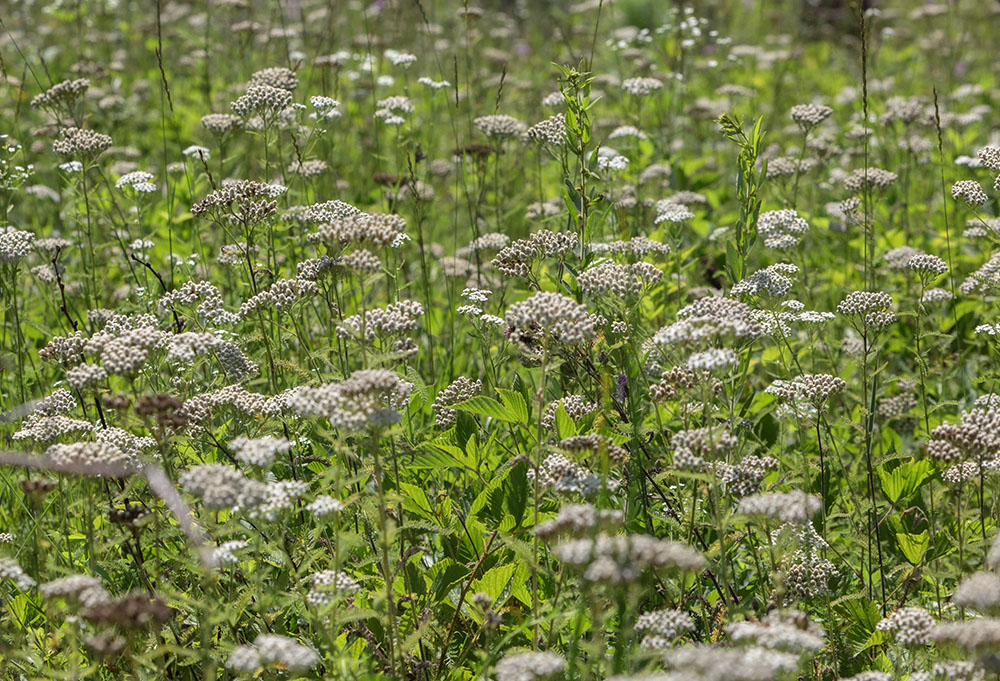
Mukwonago River Oak Barrens is open to the public, but it can be a little hard to find. As of now there is no sign to help you find the entrance, which is on the south side of County Hwy LO, about halfway between Hwy E and the entrance to the Mukwonago River Unit of the Kettle Moraine State Forest (which Google seems to think is called Rainbow Springs Nature Preserve). Map here.
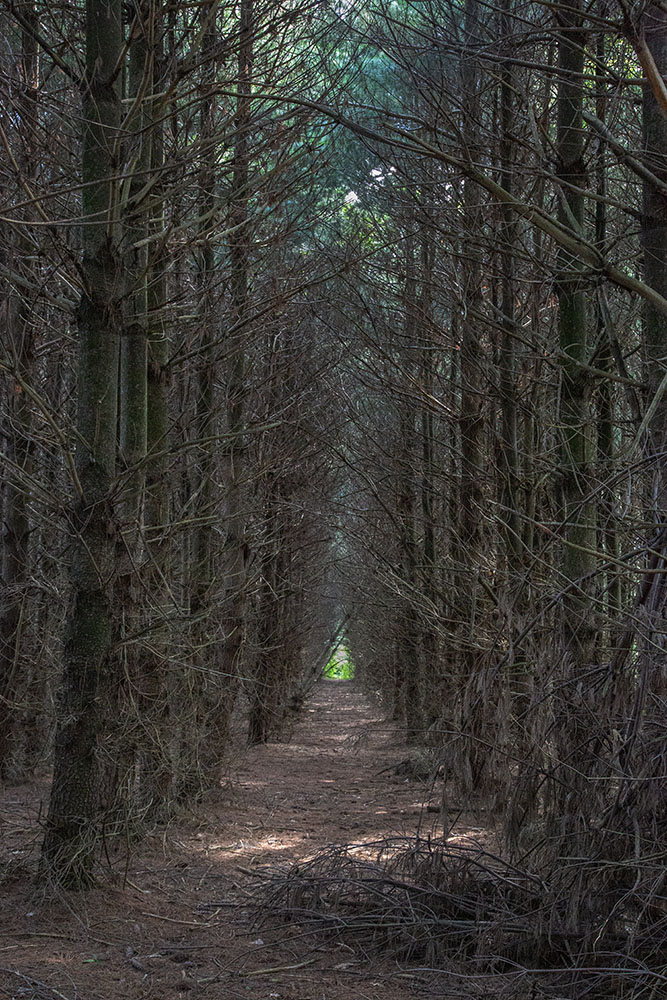
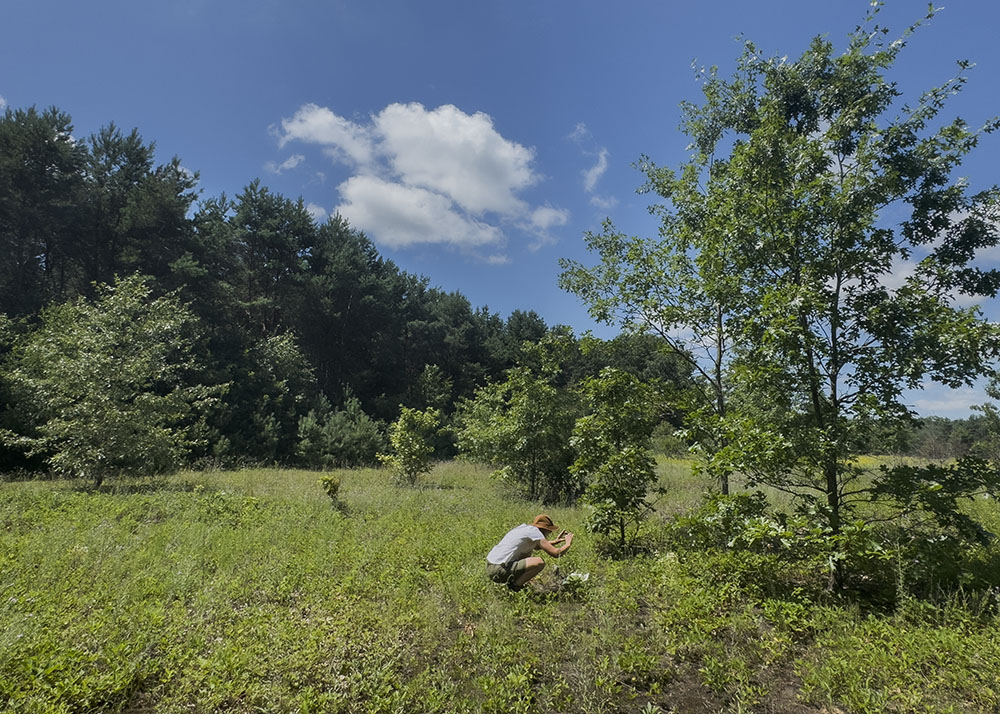
At the conclusion of our tour we were reminded that the protection of the Mukwonago River Oak Barrens was made possible with support from Wisconsin’s Knowles-Nelson Stewardship Program, as have so many other unique and ecologically significant places all over the state. Unfortunately, unlike in previous years, the state legislature has not included any funding for Knowles-Nelson in next year’s state budget—ostensibly so that it can be taken up in separate legislative action.
Please contact your state legislators:
Urge them to in fact take up, reauthorize and fund the Knowles-Nelson Stewardship Program so that it can continue to help protect Wisconsin’s vital landscape. For more information go to the Knowles-Nelson website.
Related stories:
Badertscher Preserve: The Prairie Enthusiasts aid with restoration efforts
Young Prairie: Restoration and Recreation
The Seed Idea: Smolenski Park Prairie Restoration
Thanks go to The Prairie Enthusiasts for providing most of the information in this story. Go to their website to learn more about the organization and how to get involved.
All photographs by Eddee Daniel, except as noted. Eddee Daniel is a board member of Preserve Our Parks.
About Preserve Our Parks
Preserve Our Parks, Inc. is an independent nonprofit organization dedicated to the preservation of parks and green spaces. Our mission: To advocate for and promote Milwaukee area parks and open spaces and to strive to protect the tenets of Wisconsin’s Public Trust Doctrine.
For more than 25 years, we have been a leader in advocating for the protection of Milwaukee County park lands, halting many proposals to develop, privatize, or sell local parkland and lakefront spaces. More information about POP, including past accomplishments, is available at www.preserveourparks.org.

